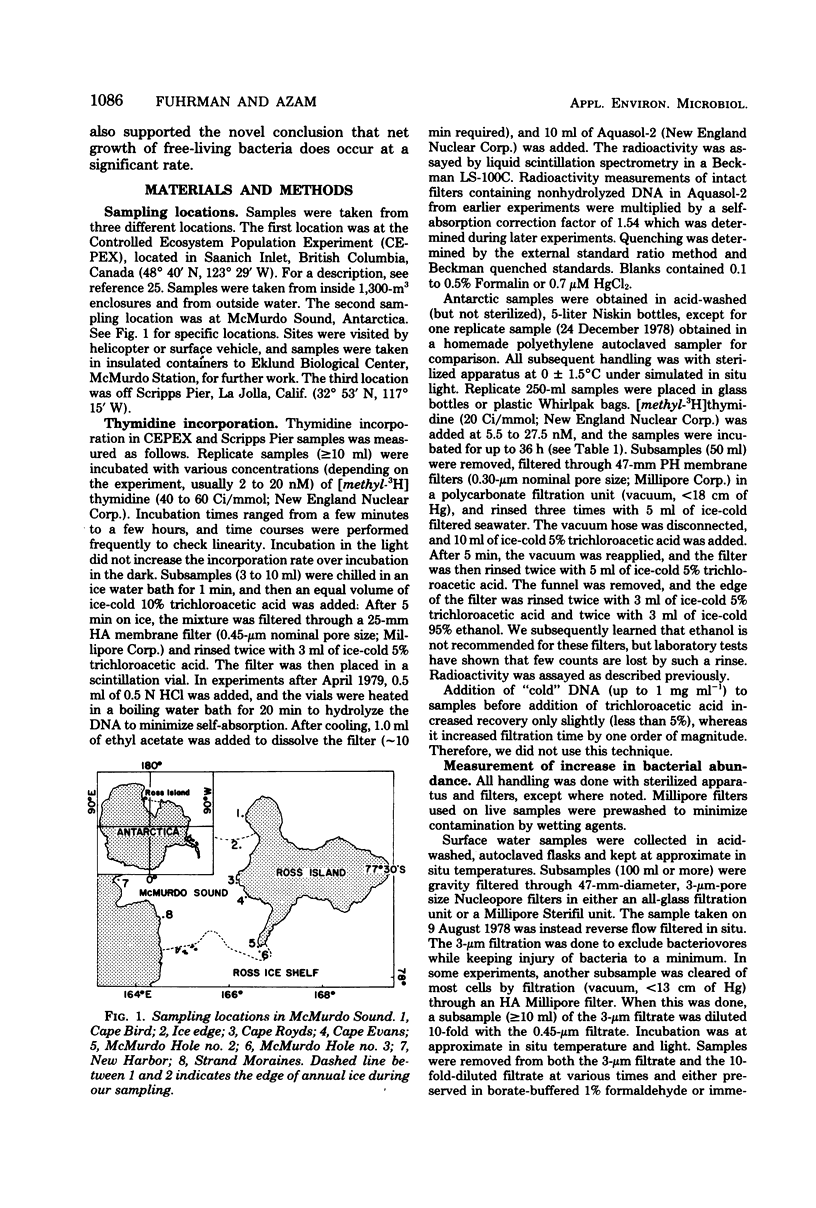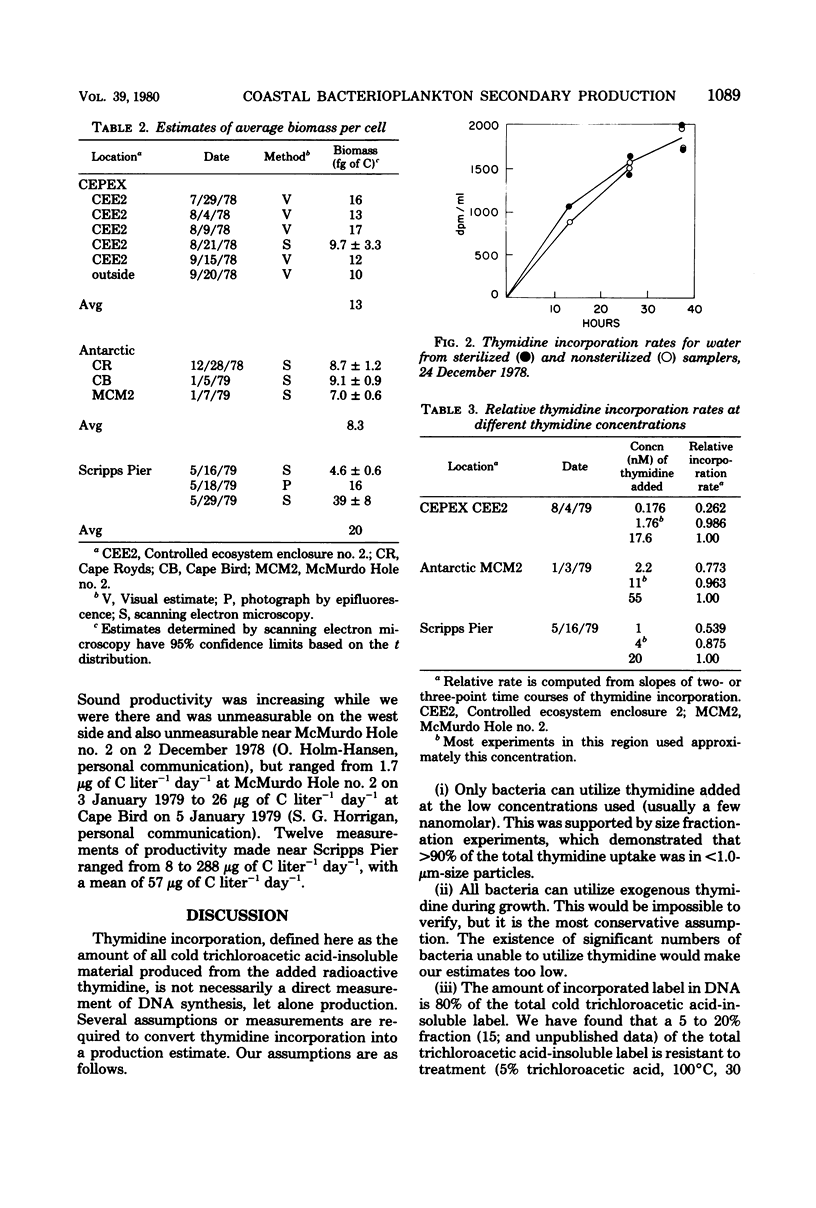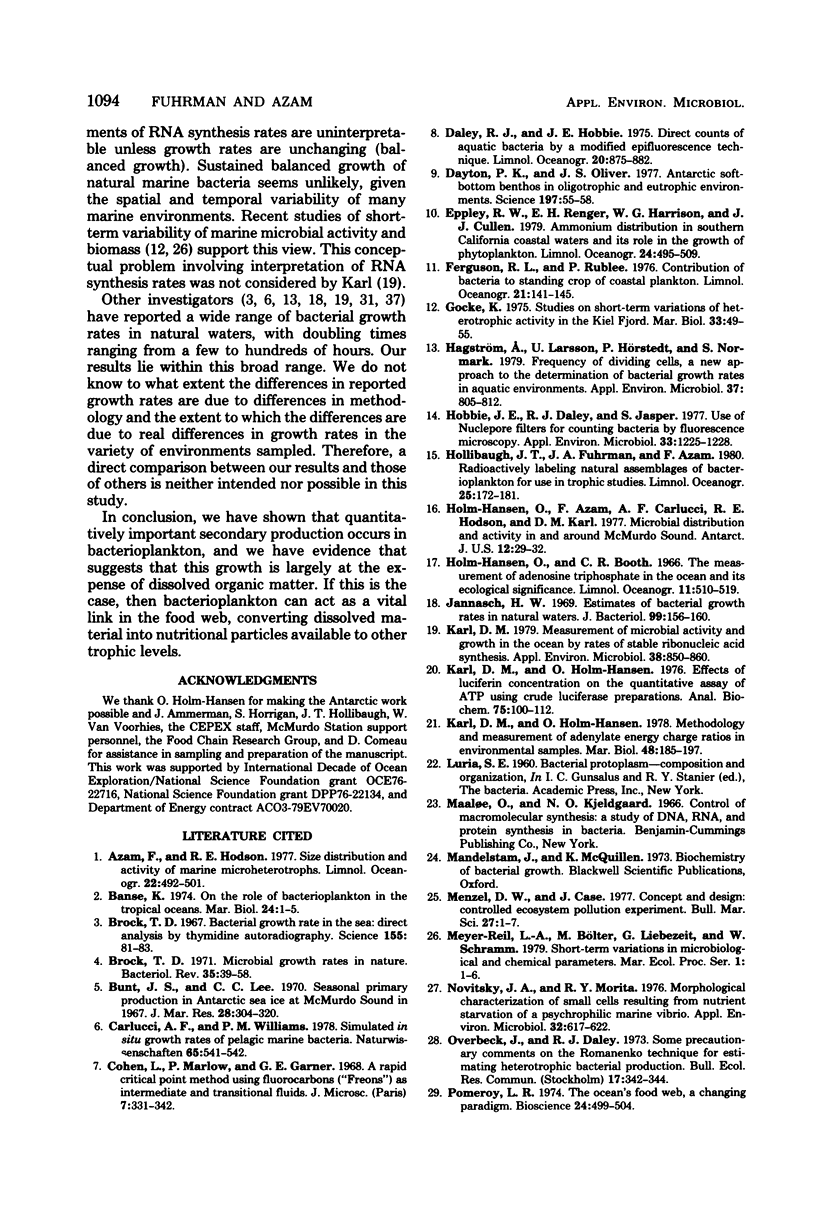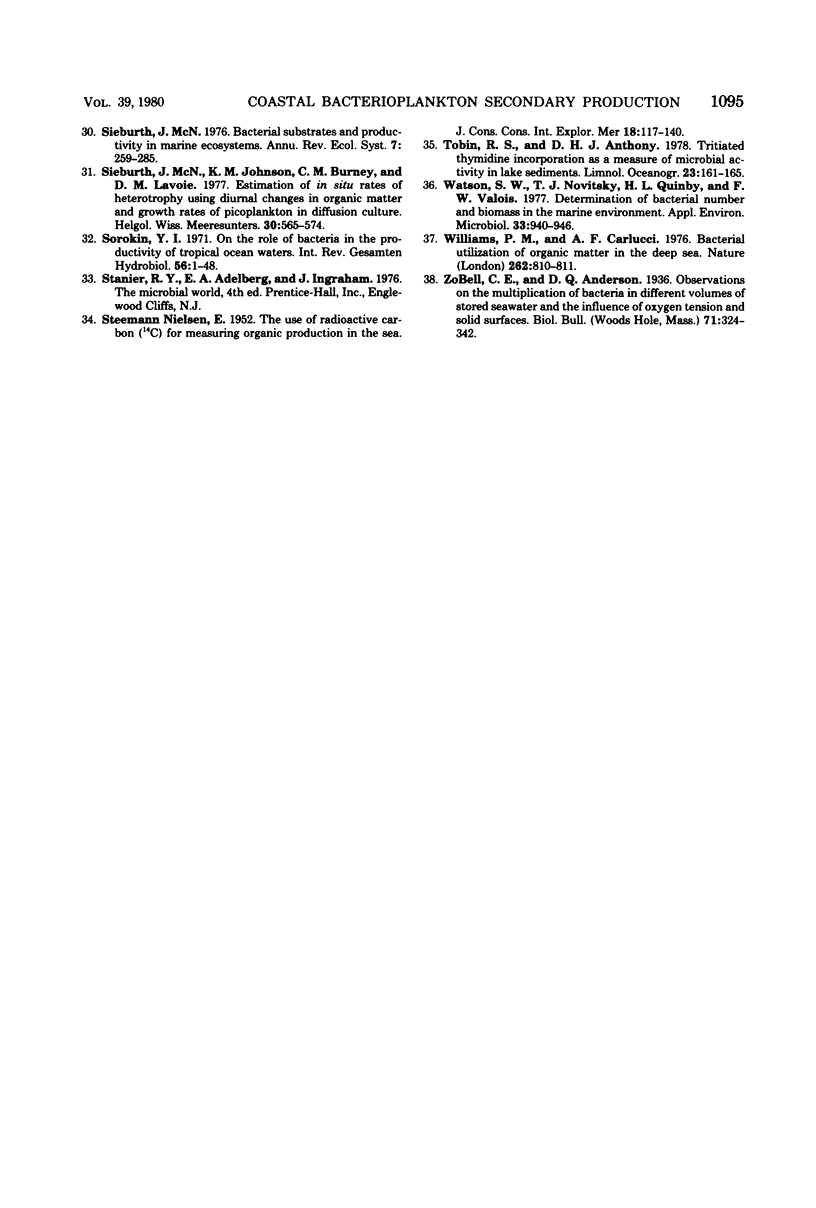Abstract
The principal objective of this study was to quantify the rate of heterotrophic bacterioplankton production. Production was estimated by two approaches: (i) measurement of increasing bacterial abundance with time in filtered (3-μm pore size) seawater and (ii) estimation of bacterial deoxyribonucleic acid synthesis by tritiated thymidine incorporation in unfractionated seawater. The two approaches yielded comparable results when used at the Controlled Ecosystem Population Experiment (Saanich Inlet, British Columbia, Canada), at McMurdo Sound (Antarctica), and off Scripps Pier (La Jolla, Calif.). Estimated bacterioplankton production was lower in Antarctic samples (ranging from ∼0 to 2.9 μg of C liter−1 day−1) than in those from the other two sites (ranging from 0.7 to 71 μg of C liter−1 day−1). In all three regions studied, it appeared that a significant fraction of the total primary production was utilized by the bacterioplankton and that substantial growth could occur in the absence of large particles. These results support the conclusion that bacterioplankton are a quantitatively important component of coastal marine food webs.
Full text
PDF










Selected References
These references are in PubMed. This may not be the complete list of references from this article.
- Brock T. D. Bacterial growth rate in the sea: direct analysis by thymidine autoradiography. Science. 1967 Jan 6;155(3758):81–83. doi: 10.1126/science.155.3758.81. [DOI] [PubMed] [Google Scholar]
- Brock T. D. Microbial growth rates in nature. Bacteriol Rev. 1971 Mar;35(1):39–58. doi: 10.1128/br.35.1.39-58.1971. [DOI] [PMC free article] [PubMed] [Google Scholar]
- Dayton P. K., Oliver J. S. Antarctic soft-bottom benthos in oligotrophic and eutrophic environments. Science. 1977 Jul 1;197(4298):55–58. doi: 10.1126/science.197.4298.55. [DOI] [PubMed] [Google Scholar]
- Hagström A., Larsson U., Hörstedt P., Normark S. Frequency of dividing cells, a new approach to the determination of bacterial growth rates in aquatic environments. Appl Environ Microbiol. 1979 May;37(5):805–812. doi: 10.1128/aem.37.5.805-812.1979. [DOI] [PMC free article] [PubMed] [Google Scholar]
- Hobbie J. E., Daley R. J., Jasper S. Use of nuclepore filters for counting bacteria by fluorescence microscopy. Appl Environ Microbiol. 1977 May;33(5):1225–1228. doi: 10.1128/aem.33.5.1225-1228.1977. [DOI] [PMC free article] [PubMed] [Google Scholar]
- Karl D. M., Holm-Hansen O. Effects of luciferin concentration on the quantitative assay of ATP using crude luciferase preparations. Anal Biochem. 1976 Sep;75(1):100–112. doi: 10.1016/0003-2697(76)90060-9. [DOI] [PubMed] [Google Scholar]
- Karl D. M. Measurement of microbial activity and growth in the ocean by rates of stable ribonucleic Acid synthesis. Appl Environ Microbiol. 1979 Nov;38(5):850–860. doi: 10.1128/aem.38.5.850-860.1979. [DOI] [PMC free article] [PubMed] [Google Scholar]
- Novitsky J. A., Morita R. Y. Morphological characterization of small cells resulting from nutrient starvation of a psychrophilic marine vibrio. Appl Environ Microbiol. 1976 Oct;32(4):617–622. doi: 10.1128/aem.32.4.617-622.1976. [DOI] [PMC free article] [PubMed] [Google Scholar]
- Watson S. W., Novitsky T. J., Quinby H. L., Valois F. W. Determination of bacterial number and biomass in the marine environment. Appl Environ Microbiol. 1977 Apr;33(4):940–946. doi: 10.1128/aem.33.4.940-946.1977. [DOI] [PMC free article] [PubMed] [Google Scholar]
- Williams P. M., Carlucci A. F. Bacterial utilisation of organic matter in the deep sea. Nature. 1976 Aug 26;262(5571):810–811. doi: 10.1038/262810a0. [DOI] [PubMed] [Google Scholar]


